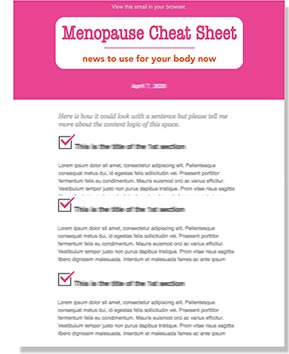
By then she had quit smoking. But for the next 40+ years, until my stepfather passed on, she was an innocent victim of ‘second-hand smoke’ which no doubt contributed to her COPD.
November is COPD Awareness Month and I’d like to share some information with you about the third leading cause of death in the U.S. . . . and what you can do to prevent it. But first, you should know what COPD is: Chronic Pulmonary Obstruction Disease, a debilitating lung disease, that affects as many as 24 million Americans, and it seems to hit women a lot harder than men.
Statistics from the COPD Foundation:
- – COPD kills more women than breast cancer and diabetes combined
- – Women who smoke are 13 times more likely to die from COPD than non-smokers.
- – Women are twice as likely to be diagnosed with chronic bronchitis as men; killing women at almost double the rate in some states.
- – COPD symptoms begin to hit the hardest when you’re between the ages of 50 and 60.
- – Symptoms increase as you age, and coughing, wheezing, shortness of breath and some weight loss are often common complaints.
- – Many individuals are incorrectly or simply not diagnosed with the disease and may disregard the symptoms as “normal” signs of aging.
- – COPD is a progressive lung disease that makes it increasingly difficult to breathe.
- – It is the third leading cause of death in the U.S. — 24 million people in the U.S. have the disease, but 12 million do not know they have it.
Signs and Symptoms
- – Signs include chronic cough, wheezing, chest tightness and shortness of breath.
- – People often misread these symptoms as signs of aging or being out of shape. This is a common mistake, because COPD mostly occurs in people 40 years of age and older, just as middle age starts to settle in. People may also connect weight gain or inactivity with shortness of breath. Yet, COPD can develop for years without any noticeable signs of shortness of breath.
- – There is a correlation between former smokers and COPD. Not everyone who smokes develops COPD; most of the individuals who have COPD (about 90 percent of them) have smoked. Heavy or long-term contact with secondhand smoke or other lung irritants in the home, such as organic cooking fuel, may also cause COPD.
- – Environmental factors may also contribute to COPD. Long-term exposure to harmful pollutants in the workplace and exposure to dust or fumes can be a factor. Even if an individual has never smoked or been exposed to pollutants for an extended period of time, they can still develop COPD.
- – Genetics can also play a role in an individual’s development of COPD – even if the person has never smoked or has ever been exposed to strong lung irritants in the workplace.
Find out if you are at risk, and learn how to prevent this disease:
- – Take the COPD Foundation Risk Screener
- – Quit smoking and avoid secondhand smoke, which can be just as dangerous as smoking
- – Avoid lung irritants, including dust, air pollution, paint sprays, chemical fumes and other airborne irritants
Coping with COPD
- – If you are diagnosed with COPD, it will be important for you to consider making changes in your life. Talk with your doctor what you can do to breathe better, and improve your ability to take part in your usual activities.
- – Call the COPD Information Line at 1-866-316-COPD (2673), and connect with the COPD community, and talk to others who are living well with many of the same challenges you face.
- – There are many different therapies available for the treatment of COPD including medication and various breathing techniques. Pulmonary rehabilitation programs are also very beneficial and help you learn to breathe – and function – at the highest level possible. At pulmonary rehabilitation you’ll work with a team of specialists who will help you improve your physical condition, and learn how to manage your COPD so you will stay healthy and active long after you complete the course.
Don’t become another statistic. Know your risks, and do everything you can to keep your lungs healthy . . . including breaking the smoking habit.
Subscribe to The Best of Everything After 50 Web series on the AARP YouTube Channel! For more tips on living your best life after 50 (or 60, or 70…) check out bestofeverythingafter50.com. Find Barbara on Facebook or on Twitter at @BGrufferman.”






























































One comment
Claudia Kosa
(MUST READ: HOW I GOT CURED FROM COPD)
My name is Claudia Kosa I thought i should share this here as someone may need this information; I was diagnosed of COPD in February 2015, my doctor told me it has no permanent cure, i was given inhaler to help relax my airway and other medications to ease the situation, this continued till a friend of mine Anna Burke told me about Dr Ejiro from South Africa who cured her father of COPD and Glaucoma. I contacted this herbal doctor via his email and bought the herbal medicine from him, i received it within 6 days and applied it as prescribed and was totally cured within 19 days of usage. my life is back again! Contact this herbal doctor via his email ejiroherbalcure(at)gmail(dot)com or call/whatsapp +27617403481 (Write email in right format)